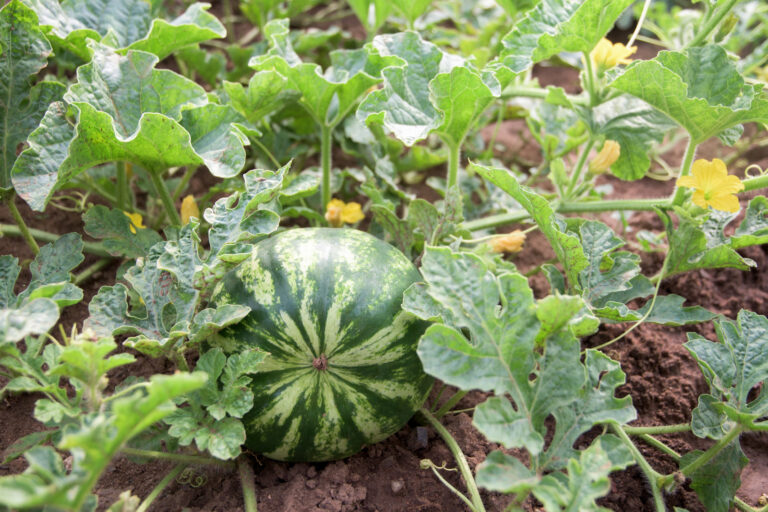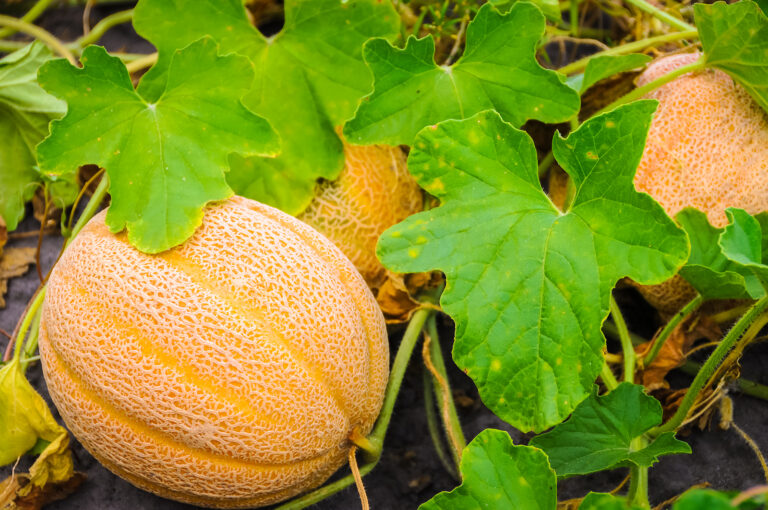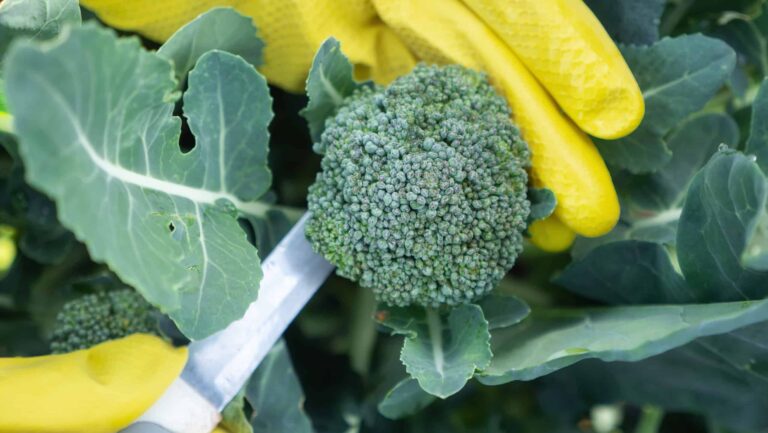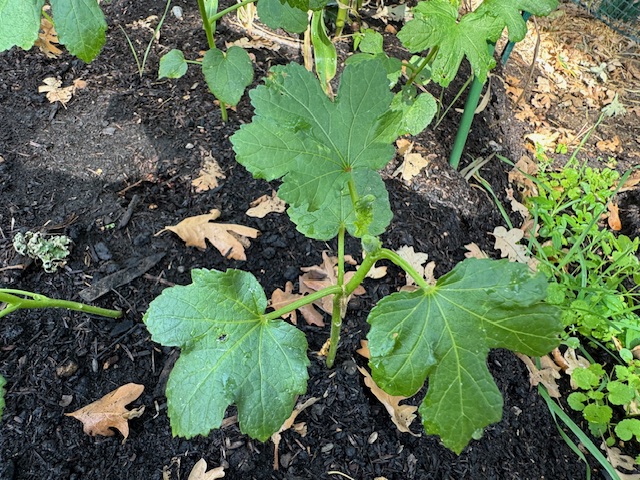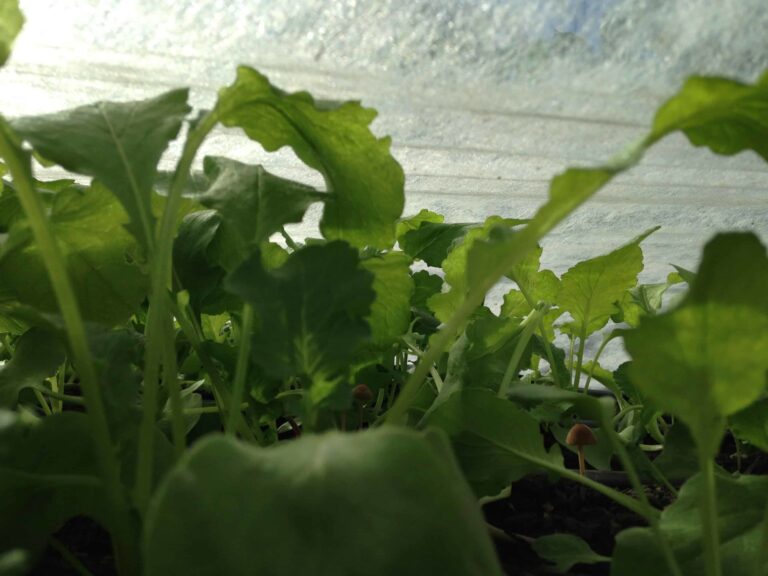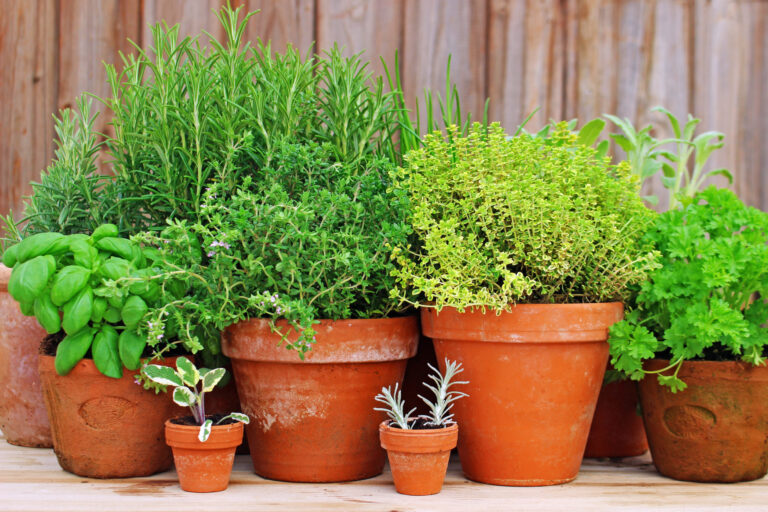Vegetable Harvest Times
Timing is everything when it comes to the home vegetable garden harvest. Once vegetables are picked they immediately begin to lose flavor, tenderness, and nutritional value. Harvest your crops as close to the time you plan to serve them, within an hour or less of serving time is best.
How do you know when it is time to harvest your crops? Here are a few indicators:
- Color. Many vegetables turn colors as they ripen–tomatoes and peppers are examples. Check the seed packet or look at the description for each crop listed here so that you know when to pick.
- Sheen. Vegetables ready for picking commonly have a shiny, healthy look. If the skin of the crop is dull, the peak time for harvest may have passed. (Watermelon is one exception.)
- Size. Most vegetables are ready for harvest when they reach a usable size. To check the tenderness and flavor of a vegetable bite into it. Don’t delay the harvest simply to grow bigger crops–flavor will likely be lost.
Most vegetables can be harvested when they are just half-grown; this is when most vegetables are at their height of tenderness and flavor. Crops that mature in late summer and fall have a relatively long harvest period–sometimes as long as two weeks or more. These crops can usually be stored for early winter use if you can’t get them to the table right away. The early season usually requires serving very close to harvest time.
Experience and taste will teach you when a crop is ready for the kitchen–when it has reached peak flavor and tenderness. The best time for harvest–the horticultural and culinary harvest–can be different from when a crop reaches botanical maturity. Botanically mature cucumbers are yellow and seedy–past time for the cook’s harvest. The culinary and botanical harvest for tomatoes, however, is the same.
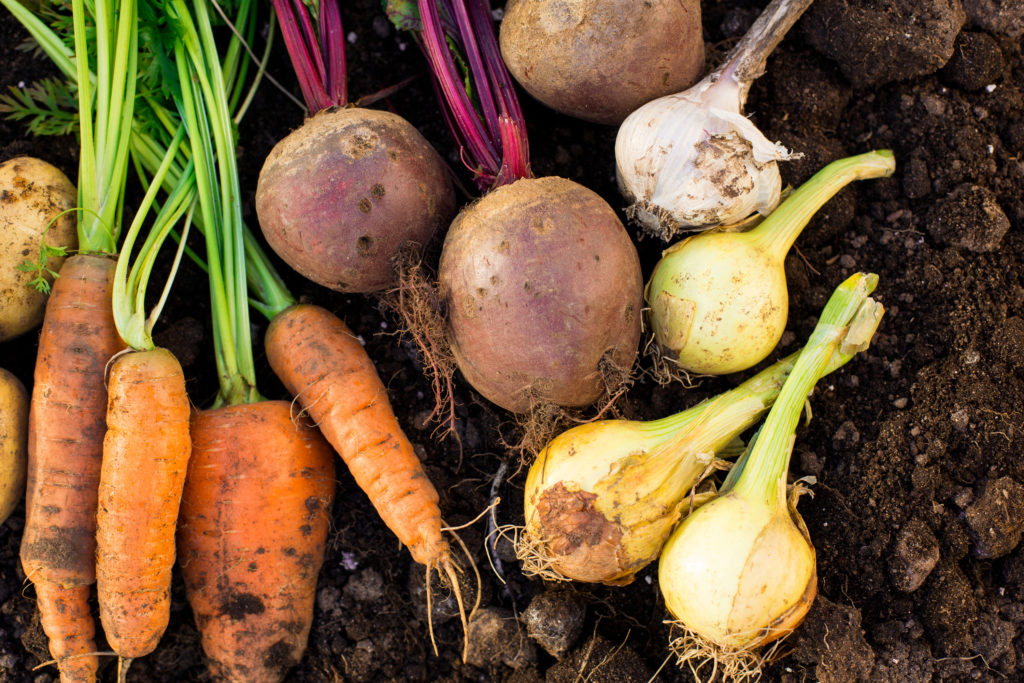
When to harvest vegetables
Asparagus
Pick asparagus when stems reach 6 to 10 inches tall, less than 1 inch round, and bud tips are still very tight. To harvest bend the stems until they snap; the portion that is too tough to snap is too tough to eat. Pick all stems at this stage; stems that grow larger will compromise the plant’s ability to send up new shoots. Harvest time is over when stems no longer grow larger than ½ inch in diameter. Asparagus started from crowns or seedlings should be allowed to become established and gain strength for two years before the first harvest.
Beans, snap
Pick snap beans when they are still able to snap when bent. Pick snap beans before the seeds have begun to fill out the pods. These pods will be tender, moist, and succulent. Time from sowing until harvest will vary with variety. Bush snap beans are usually ready for harvest in 8 weeks, pole snap beans in 9 weeks.
Beans, green shell
Pick shell beans when the beans inside the pods are fully formed (open one to see) but before the pods begin to deteriorate. Bush shell beans are usually ready for harvest 9 to 10 weeks after sowing.
Beans, dry
Dry beans should be left on the vine to dry before harvest. Wait until the foliage has yellowed and withered and pods have become papery before picking.
Beans, Lima
Pick lima beans when pods are fully formed in the pods. Bush Lima beans are usually ready in 9 to 10 weeks after sowing, and pole Lima beans about 13 weeks after sowing.
Beets
Pull beets for their roots when they are less than 2 inches and not more than 3 inches across, usually eight to nine weeks after seeds have been sown. These beets will be most tender. Beets that stay in the ground too long will be tough and woody. To check beet size for harvest, push the soil away from the top of the beet.
Beet greens
Beet seedlings or greens can be harvested when 4 to 5 inches tall. Greens taste better when they are young and tender but can be harvested at any time throughout the season.
Broccoli
Broccoli is ready for harvest just before flower buds begin to open, about 14 to 60 weeks after sowing depending upon variety, Harvest broccoli with a knife, cut the stem just beneath the top cluster of buds; this will stimulate the growth of more–though smaller–broccoli heads. Side branches will develop clusters of smaller buds over the next 8 to 10 weeks. Broccoli is past harvest time when yellow florets are visible.
Brussels sprouts
Pick the first sprouts when they become firm, about 16 weeks after sowing; continue the harvest over the next 6 weeks or so. Start the harvest when the first sprouts are 1- to 1½ inches across; start with the bottom sprouts and work up as the sprouts develop. If the harvest is not complete when night temperatures drop below 20°F, dig up the plant and place it in a protected place where it will continue to grow until all sprouts mature.
Cabbage
Cut cabbage heads at the base of the stalk when heads are formed and firm to the touch. Early varieties will be ready in about 105 to 115 days after sowing; midseason varieties will be ready in 125 to 135 days and late varieties will be ready in 145 to 165 days. Cut the heads from the roots with a sharp knife. If you leave the stalks and roots in place, you may get a second harvest from early varieties.
Carrots
Harvest carrots as soon as the roots are large enough to use. Pull up roots as needed until the ground has begun to freeze
Cauliflower
Harvest heads while they are compact and tight. Cut the stalk just below the head. White-budded varieties are ready for harvest 100 to 110 days after sowing; purple-budded varieties are ready 130 to 145 days after sowing. Varieties that require blanching may be ready a few days after blanching in warm weather; in cooler weather, heads may take two weeks to reach harvest after blanching. Harvest early rather than late; heads that stay too long on the plant can become “ricey”–the curds begin to break apart into individual flowers.
Harvest celeriac root crowns when they have reached 2 to 4 inches in diameter.
Celery
Celery is edible at all stages of growth. Celery reaches maturity about 110 days after plants are set in the garden, and about 180 days after sowing. To harvest, cut individual stalks or pull up the plant and cut off the roots just below the base of the stalk. Individual stalks should be harvested from the outside working to the middle.
Celtuce
Pick celtuce leaves from the base of the plant when young–in the first four weeks. Stalks can be harvested when they are about 1 inch in diameter at the base but before the seed heads appear. Slice off the stalk at ground level and pull off the leaves.
Chard, Swiss
Cut chard leaves when they are 6 to 10 inches tall, about 40 to 60 days after sowing seeds. Cut the outer leaves near the base of the plant with a sharp knife; the inner leaves will continue to grow and can be cut a few days later. Get rid of old or tough leaves to keep the plant producing new leaves.
Chicory
Leaf chicory heads can be cut from the roots as needed. Witloof chicory chicons can be harvested when about 6 inches long; twist and break off the head.
Chinese cabbage
All varieties of Chinese cabbage or Chinese leaves are ready for harvest when leaves are about 15 inches long, about 80 to 90 days after sowing seeds. Pull up the plant and cut off the roots and get rid of tough outer leaves. Non-heading Chinese cabbage can be harvested cut-and-come-again. Leave at least five leaves on the plant to promote a second harvest.
Collards
Harvest collard leaves when they are young, tender, and mild flavored. Collard leaves will reach maturity about 40 days after seeds are sown; leaves can be picked earlier. Cut away outer leaves and leave the central bud intact so that the plant will continue to send out more leaves as the stem grows taller. To harvest the entire plant, cut it off at the stalk; the leaves at the top will be the most succulent.
Corn, sweet
Pick corn when the silks at the end of the ears turn brown and damp and the ears are full and firm. Kernels should be full, plump, and juicy. The top of the husk will be round and blunt, not pointed. Early varieties mature in about 75 days; late varieties mature in 85 to 95 days. Midsummer-planted corn will require about 14 days extra to mature. To harvest corn, give the cob a sharp twist downward from the stalk.
Cowpeas
Cowpeas can be picked when they are young and succulent for use as green beans. To use cowpeas as green shell beans, pick them when they are nearly mature in size.
Cress
Land cress is ready for harvest as soon as 10 days after growth has started. Garden cress is ready for harvest as soon as the third leaf appears. Watercress is ready for harvest about 14 days after the seed is sown. Use cress from the tips which are sweeter flavored.
Cucumber
Cut slicing cucumbers from the vine when they are 6 to 8 inches long and dark green; pickling cucumbers can be cut from the vine when they are 1½ to 3 inches long. Do not leave cucumber on the vine to turn yellow or orange. Cucumbers are usually ready for harvest about 60 days after sowing. Pick cucumbers regularly or the plant will stop producing.
Eggplant
Eggplant is ready to pick when the fruit is 3 to 6 inches long and very shiny, not dull. Dull fruit is overripe. Eggplant is usually harvested about 145 days after seeds have been sown, about 70 days after setting seedlings into the garden. Immature fruits are tender and can be eaten. Cut the fruit from the plant with shears, the stems are tough. Sliced eggplant with brown seeds is passed its peak.
Endive, Escarole
Pick endive and escarole leaves or plants at any size. Leafy heads can be cut off at the base of the leaves or leaves can be harvested cut-and-come-again. Endive and escarole reach maturity about 90 days after seeds are sown. To blanch the leaves before harvest, gather the long outer leaves together over the crown of the plant and hold them together with a rubber band.
Florence fennel
The bulbous stem of Florence fennel is ready for harvest when it measures 2½ to 3 inches in diameter. Larger stems may be tough and stringy. Dig up the whole plant and cut off the roots and upper branches. The leaves of Florence fennel can be used for garnishes and flavorings when the plant is 18 inches tall.
Garlic
Garlic is ready for harvest 90 to 110 days after planting when the tops begin to yellow and droop. When leaves begin to yellow, stop watering and bend over the leaf tops to begin curing the bulb. Allow bulbs to dry in a shady place for several days until the skin becomes papery. Allow bulbs to completely dry then cut off the leaf stalks and trim the roots. Young garlic leaves can be trimmed like chives to use as a flavoring.
Globe artichoke
Globe artichokes are ready for harvest the second year after planting. Harvest artichoke buds when they are plump but before the bracts open. Harvest the large central globe first; afterward, side side-shoot globes can be picked. Buds are past harvest when they turn purple and the flowers become visible. Flower heads can be cut 5 to 6 inches down the stem.
Hamburg parsley
Hamburg parsley is usually ready for harvest when roots are 6 to 8 inches long. Larger roots are better tasting than smaller roots. In cold winter regions, dig roots before the ground freezes. Leaf tops can be harvested during the growing season and used like leaf parsley; do not remove too many stems or the root will not develop.
Horseradish
Lift horseradish root after cool weather arrives in fall. Several touches of frost will enhance the flavor of horseradish. Lift the roots by hand after loosening the soil with a spading fork. Horseradish requires an average of 120 days to reach maturity.
Jerusalem artichoke
Lift tubers after the foliage has died back in autumn or early winter. Loosen the soil with a garden fork then pull the tuber from the ground. Jerusalem artichokes require about 120 days to mature.
Kohlrabi
Harvest kohlrabi when the stems are about the size of a small apple, about 2 to 2½ inches across, about 8 weeks after sowing. Do not let the stems grow older they will become tough and stringy. Cut the stems at soil level about an inch below the bulb.
Leeks
Leeks are ready for harvest when stems are 1 inch in diameter about 16 to 18 weeks after sowing. Leek stems will be about 2½ inches around at full maturity. Lift leeks by hand or with a garden fork.
Lettuce
Crisphead, cos, and butterhead lettuce are ready for harvest when heads are firm 10 to 11 weeks after sowing; cut off the whole head at the root crown. Harvest loose-leaf lettuce leaf by leaf, cutting outer leaves when they are large enough to use about 6 to 7 weeks after sowing. Romaine lettuce will be ready for harvest about 11 to 12 weeks after sowing. All lettuce leaves are edible at any stage of growth.
Luffa
Pick luffa when the fruit is 4 to 5 inches long; longer fruits will be stringy. Luffa leaves can be picked for salads when young and tender. Blossoms can be picked for kitchen use at full size. Luffa fruit is ready for harvest about 120 days after sowing.
Malabar spinach
Pick the leaves of Malabar spinach while still tender and young, after the plant has begun to branch. Older leaves will be tough. Malabar spinach requires about 70 days to reach maturity from sowing.
Melon
Cantaloupe is ready for harvest at the “slip” stage–when slight pressure at the point where the stem joins the melon causes the melon to slop off the vine. Casaba and honeydew melons are ripe when the skin turns yellow. Crenshaw and Persian melons are ready for harvest when they have a fruity scent. Watermelons are ripe when a rap on the fruit creates a dull sound.
Mustard
For best flavor, mustard leaves should be picked cut-and-come-again when leaves are 4 to 5 inches long or the entire plant can be harvested. Older leaves can be cooked. Mustard takes 30 to 50 days to reach maturity from sowing depending on the variety.
New Zealand spinach
Cut New Zealand spinach leaves for harvest when they are 3- to 4-inches long. New Zealand spinach can be harvested cut-and-come-again.
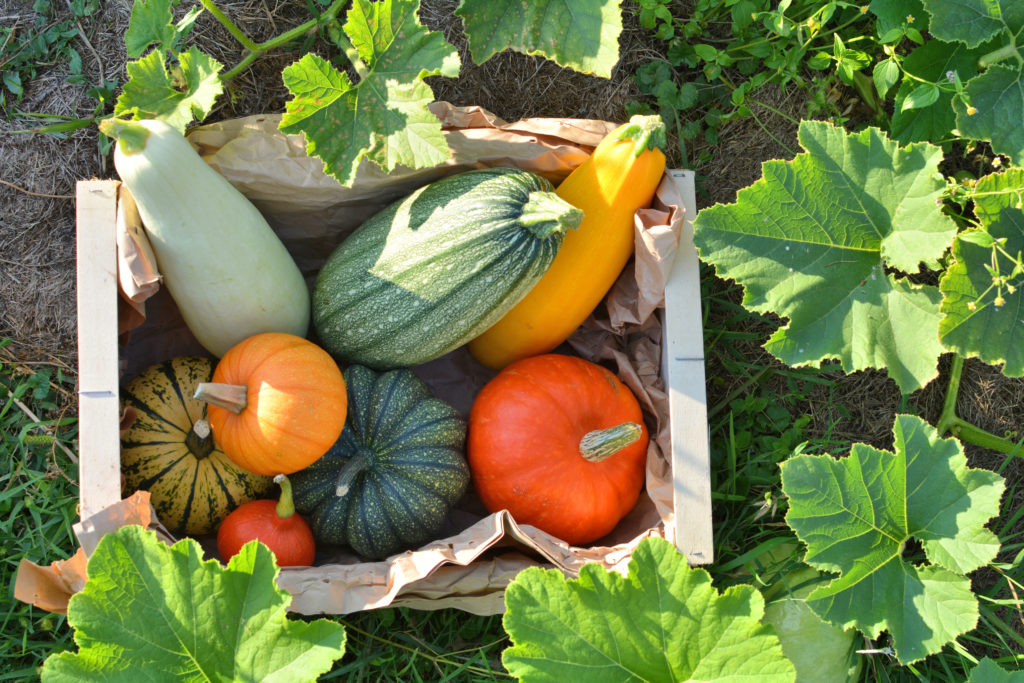
Okra
Okra is ready for harvest about 60 days after the seeds are sown. Pick pods when they are 2 to 3 inches long and soft; harvest comes just about five days after the flowers fade. For a continuous harvest pick pods every three days and do not allow pods to mature on the plant.
Onion
Bulb onions depending upon variety are ready for harvest about 3 to 5 months after the seeds are sown or about three and a half months after sets or young plants have been set out. When leaves start to turn yellow, bend the stems to a nearly horizontal position to stop the growth of the bulb and allow it to ripen. Remove soil from around the top half of the bulb. When the leaves turn brown, lift the bulbs. Bunching or green onions or scallions can be harvested as young as needed beginning just a few weeks after sowing. Scallions have the best flavor when harvested less than 10 inches long.
Parsnip
Spring-planted parsnips are ready for harvest in early fall, about four months after seeds are sown. The flavor of parsnip roots is enhanced by a few hard touches of frost. Parsnips will be very flavorful if left in the ground all winter. Harvest parsnips are left in the ground over the winter before new growth begins in spring.
Peas
Green pea pods should be picked when the pods are firm but still succulent before they start to yellow or begin to shrivel. Green peas are usually ready for harvest about three weeks after flowering or 60 to 70 days after sowing. Edible-pod peas such as snow peas should be picked when they are still flat and the peas inside are barely discernible. It is best to cut pea pods from the plant with small scissors or pruners rather than pull or jerk them away from the vine. Garden peas can be left on the vine to wither and turn brown then harvested, shelled, and dried for use as dry peas.
Peanuts
Lift peanuts when the foliage yellows and the pods have filled out and the pods’ veins begin to darken. This is usually before the first frost in fall but could come after the first light frost. Even after the foliage has died back, pods will continue to mature for several weeks Peanuts usually mature 110 to 120 days after planting.
Peppers
Sweet peppers and hot peppers are edible at all stages of growth–whether immature or full size, whether green or red. Peppers reach maturity at 60 to 20 days from the time starts have been set out in the garden. Hot peppers should be picked fully ripe for drying or pickling. Cut the fruit from the plant rather than pull. All pods should be picked before the first frost.
Potato
Young potatoes–called new potatoes–can be harvested as early as 45 to 55 days after planting, usually about the time blossoms appear or a week or two later. Lift new potatoes as soon as they reach usable size. Early varieties are best for new potatoes. Late varieties–often used for storage–should be lifted about the time of the first autumn frost. Continue the harvest for two to three weeks after the tops have died back. Remove large tubers first allowing smaller ones time to grow. Lift potatoes in dry weather being careful not to bruise the skin.
Pumpkin
Harvest pumpkins when the leaves die and the fruit becomes a rich orange, about four months after sowing; the sheen of the skin will have faded. For storing, cut pumpkins from the vine at full maturity just before the first fall frosts. Cut pumpkins from the vine with pruning shears, leaving about 3 inches of stem on the fruit; pumpkins decay quickly if the stems are broken rather than cut. After harvesting, set pumpkins in the sun for one to two weeks to harden the outer skin, then store them in a cool dry place.
Radish
Harvest radishes when the diameters of the roots reach the size listed for each variety, usually while still less than 1 inch in diameter or as soon as they are large enough to use. Pull up early- and mid-season varieties 25 to 30 days after sowing. Take up late or winter varieties 60 days after sowing. Take up radishes before they become tough and woody.
Rhubarb
Rhubarb is a perennial; it will be ready for harvest starting about two years after planting. Harvest leafstalks that are 12 to 24 inches long and 1 inch or more in diameter. Harvest stalks before they become tough. Allow smaller stalks to continue to grow and build the plant’s strength. To harvest leafstalks grasp each stalk near its base and give it a sideward twisting tug; the stalk will separate cleaning from the top of the roots. The harvest will continue for eight to ten weeks.
Rutabaga
Rutabagas are ready for harvest as soon as they are large enough to sue, about 90 days after seed sowing. Choose rutabagas about 3 to 5 inches long, but not longer than 5 to 7 inches. Rutabaga will be most flavorful after the first autumn frost but before the roots freeze. Grasp the top of the rutabaga and pull it up. Rutabaga is ready for harvest 85 to 90 days after sowing.
Salsify
Dig up salsify roots as soon as they are large enough to use, usually about 150 days after sowing. The flavor and texture of salsify roots are enhanced by freezes in autumn or winter. Lift salsify roots with a garden spade or fork.
Shallots
Harvest shallots to use as green onions at any stage of growth. For dry bulbs, harvest shallots when the tops have browned and withered, usually about 100 days after sowing.
Sorrel
Cut sorrel leaves at any time during the growing season; young and tender leaves are the most flavorful. Cut outer leaves as needed cut-and-come-again. Sorrel reaches maturity about 70 days after sowing.
Soybeans
Pick green shell soybeans to eat the shelled beans fresh when the seeds are just mature or nearly mature, from 70 to 100 days after sowing depending upon the variety. Pick green soybeans while the pods are plump and before they begin to wither. For storage as dry beans, pick the pods when they are dry but while the stems are still green.
Spinach
Harvest spinach leaves when they are 6 to 8 inches long, about six weeks after planting. For a long harvest, cut leaves cut-and-come-again starting with the outer leaves and allowing the inner leaves to keep developing. Continue the harvest until the seed stalk appears or until the weather turns very cold. Individual leaves or the entire plant are cut off at the soil surface.
Squash, summer
Summer squash is ready for harvest when fruits are tender and easily punctured, usually about 50 days after sowing. Pick summer squash when the skin yields to thumb pressure. Zucchini is best when about 7 inches long and 1½ inches thick. Scalloped summer squash is ready for picking when the fruit is 2 to 3 inches in diameter. Pattypan is best when about 3 to 4 inches across. Crookneck and straightneck squash are best when about 4 inches long. For the best flavor harvest summer squash at no more than 6 to 8 inches long.
Squash, winter
Winter squash will be ready for harvest when the skin is extremely hard, about 80 to 115 days after planting depending upon variety. Delay the harvest of winter squash until just before the first hard frost. A light frost or two will change starch to sugar and enhance flavor. Cut winter squash from the vine leaving a 2- to 3-inch stem on the squash. Allow winter squash to cure in the sun for a week or more, then store in a cool, dry place over the winter.
Sweet potato
Dig up sweet potatoes in late fall in frost-free regions about 90 to 100 days after planting. In cold regions, dig up tubers as soon as the tops of the plants are hit by the first fall frost. Don’t allow sweet potatoes to stay in the ground much past the first frost; dying vines can spread rot to the tubers. Tubers can be harvested earlier in the season, but they gain most of their size in the last 30 days of growth. Lift sweet potatoes carefully with a garden fork or spade. Do not bruise the skin at harvest; damage can cause decay in storage. Dry sweet potatoes for two or three hours after lifting then spread them out on newspaper and allow them to dry in a place where the temperature will remain about 80°F for 10 days to two weeks. Gradually reduce the temperature to 50° to 55° by ventilating the curing area.
Tomato
Tomatoes are ready for harvest when they have developed their full color; tomatoes ripen from the center of the fruit to the outside. Pick tomatoes by gently lifting each tomato until the stem snaps. Tomatoes do not develop their natural red color in temperatures greater than 86°F; in hot regions, pick tomatoes when they are still pink and allow them to ripen fully indoors.
Turnip
Turnips are ready for harvest when roots are 2 inches in diameter, usually about 40 days after sowing. Do not allow turnip roots to grow larger than 3 inches or they will become woody and lose flavor. Grasp the top of the turnip and pull it up at harvest.
Specific Vegetable Crop Harvest Tips in the Harvest and Storage category or look up each crop in the Index.
Related articles:
Learn when and how to harvest your favorite vegetables for the best flavor and texture. Get storage tips for each crop. Click on the vegetable you are growing below.
- Artichoke
- Arugula
- Asparagus
- Beans
- Beets
- Broccoli
- Brussels Sprouts
- Cabbage
- Cantaloupe — Melons
- Carrots
- Cauliflower
- Celery
- Chard
- Collards
- Corn, Sweet
- Cucumbers
- Eggplant
- Endive and Escarole
- Garlic
- Jerusalem Artichoke
- Kale
- Kohlrabi
- Leeks
- Lettuce
- Melons
- Okra
- Onions
- Parsnips
- Peas
- Peppers
- Potatoes
- Pumpkins
- Radicchio
- Rhubarb
- Rutabaga
- Spinach
- Squash, Summer
- Squash, Winter
- Sunchokes
- Sweet Potato
- Swiss Chard
- Tomatillo
- Tomatoes
- Turnips
- Watermelon


